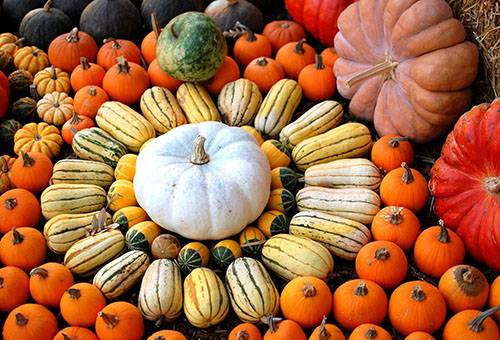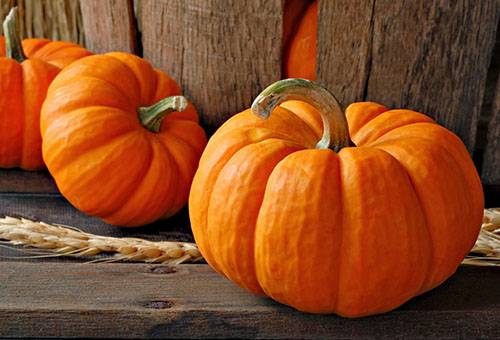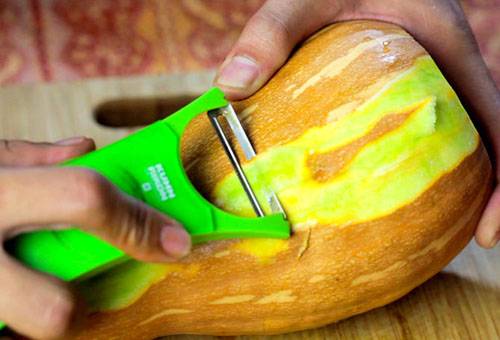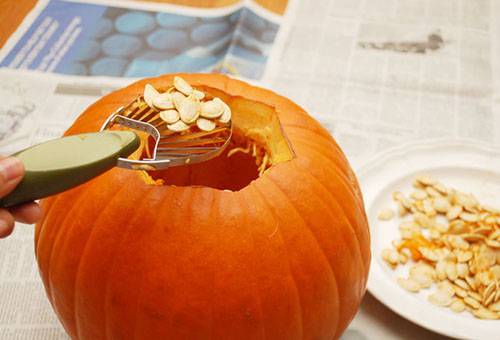How and with what to peel a pumpkin?
A lot of simple and delicious dishes are prepared using this unique vegetable. Due to its beneficial properties, nutritionists often prescribe it to people who have problems with the liver, digestive tract, kidneys, blood vessels, and vision. But in order for the process of preparing, say, pumpkin puree soup, porridge, casseroles or pancakes to be enjoyable, it is advisable to learn in time how to peel a pumpkin. Why is this so important? The fact is that the peel of the queen of vegetables is too hard. In order to avoid injury, during the cleaning process you have to put in a lot of effort and be careful. After all, if you don’t know, you can get hurt from the very first movements.

Pumpkin varieties
So, in order to have fewer problems directly during this complex process that requires such efforts, you need to prepare for it in advance. After all, there are varieties of pumpkin that are easy to peel. Therefore, now we will talk about them, about varieties.
- Die-hard
It’s easy to guess why they are so named - the peel of the ripened fruits is too woody. And it is clear that cleaning them is a very complex and hard work, which only a man can cope with. But the variety is still good - it ripens early, is small in size and is famous for the most delicious seeds.
Bush varieties are ideal.
- Large-fruited
The origin of this name is also clear. We are talking about the largest specimens. You will have to tinker with them a lot during preparation.After peeling, the pumpkin can quickly disappear, because it is unlikely that all the leftovers will go into the refrigerator. But there are pleasant moments here, because the fruits will delight you with the fact that they are the sweetest (sometimes sweeter than watermelons), react better than others to low temperatures and can be stored for a long time even in an apartment.
- Muscat
They love warmth very much, they ripen late, they may not ripen where the summer is short, and therefore it is advisable to breed them in the south. But these seem to be all the disadvantages. Because nutmeg varieties are the most delicious and rich in vitamins, they are grown by seedlings (first - seeds, and then plants in the ground), harvested immature before the first frost (they “reach” the house).
Where to start peeling a pumpkin?
So, each variety is good for something, and everyone chooses based on their preferences. But before you begin culinary research, the fruit must be peeled. Where to start?
- Select a copy suitable for a particular purpose.
- Clean off dirt, leaves, etc.
- Rinse thoroughly under the tap (especially when making juices and salads).
- Wipe with a towel or paper napkin and let dry.
- Think about whether everything will have to be cut, where to store the leftovers, etc.
How to remove the skin?
It all depends on some factors. Indeed, among the mass of varieties, each differs not only in color and condition of the bark. There is also such a thing as shape, size and scope. After all, pumpkin pulp is most often used on the farm. Therefore, it is important to get rid of the peel, the stalk, and the pericarp. Moreover, this process is individual for representatives of all varieties. Therefore, when preparing for work, they take into account the structure of the product and exactly what tools will be used. If this happens in a regular kitchen, a knife and spoon are enough.A regular vegetable peeler is very helpful, especially for small sizes.
Usually the vegetable is cut into the required parts (often very small, so as not to get hurt), and then the hardened bark is carefully peeled off with a sharp knife. Why is this approach inconvenient? Not everything can always be used at once, so there is concern that pieces of pumpkin may spoil without proper storage. Therefore, they often make do with surface treatment.
- To do this, place the prepared product on a cutting board, strengthening it so that it does not slip on the table surface.
- Using a large knife, carefully cut off the ends on both sides (somewhere at a distance of a couple of centimeters). You can throw them away.
- Using a small serrated paring knife, peel the pumpkin, removing small ribbons of skin.
- You can cut it in half, put the halves cut side down and cut into long slices - this way the knife will not slip onto your fingers.
It is advisable to place the pumpkin comfortably, holding the knife either vertically or horizontally. What you need to do next depends on what will be done in terms of the future fate of the fruits - whether they will be baked, or boiled, or put in the freezer, and so on.
How to remove seeds?
Yes, this problem needs to be solved, because you can’t cook anything with seeds. Their fate is different. Therefore, they are carefully but carefully selected by hand or spoon along with the pulp. Having placed them on a plate, you can continue to work with the fruits.
Advice
If you do not peel the entire pumpkin - both peel and seeds - you can put it in the refrigerator. But don’t put it in plastic – it will quickly disappear. These pieces can be stored for several days.
It is best to keep half a pumpkin or peeled slices close to the cold in a container, covered with cling film.
If you don't have space in the refrigerator and you don't have a pumpkin dish in your plans, you can peel it and cut it into pieces or grate it. After packing everything in bags, put it in the freezer.
Summer varieties are easier to clean, but they must be cooked immediately - they do not last long even in the refrigerator. But winter ones can be stored for a long time.
Pumpkin seeds are a healthy product, so they can be dried and eaten.
Read the article about how to peel pumpkin seeds



Excellent peeling tip if the peel is soft. But what if it’s like plastic, 2-3 mm thick? The paring knife won't take it.
I’m wondering, did Vladislav wait for an answer?
Apparently, he didn’t wait...